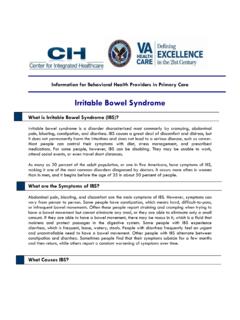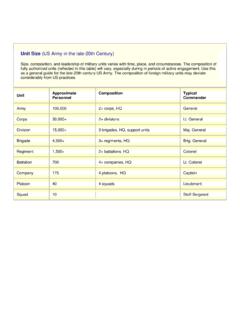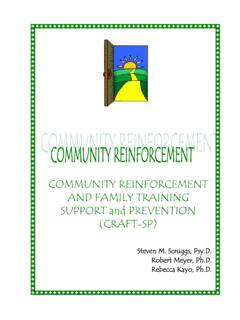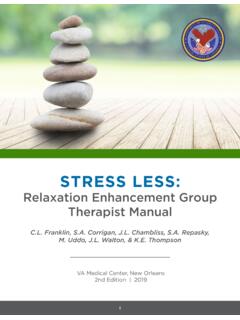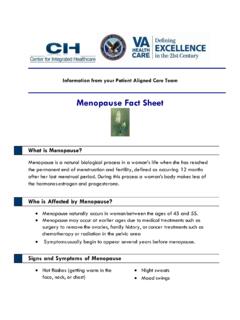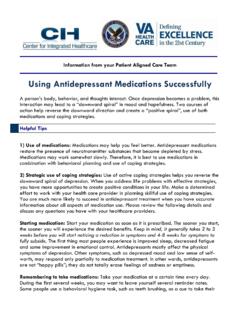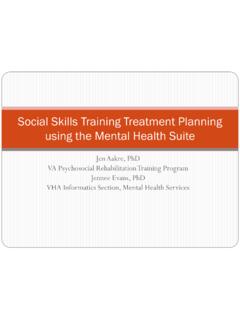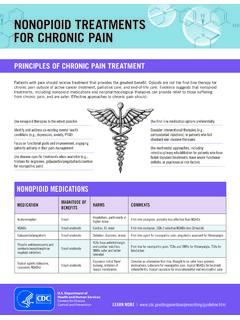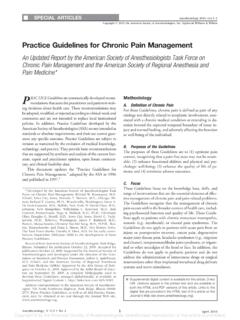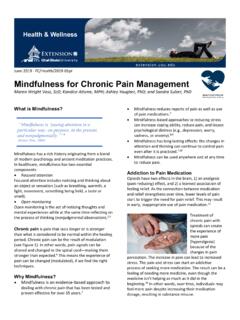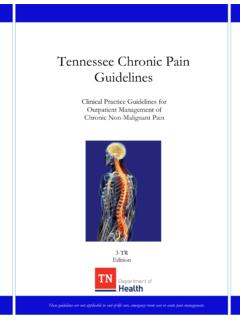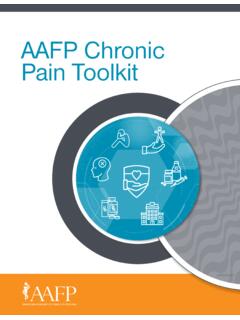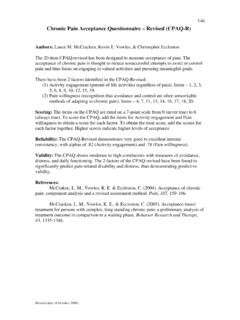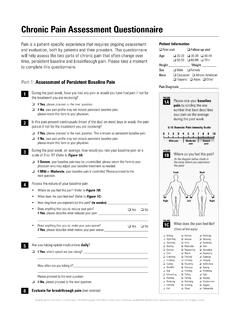Transcription of Cognitive Behavioral Therapy for Chronic Pain
1 From Brief Cognitive Behavioral Therapy for Chronic pain : Therapist Manual v (Beehler, et al., 2021). Cognitive Behavioral Therapy for Chronic pain This treatment focuses on how you think, feel, and behave in relation to your pain . As shown in the picture below, these things are all related: For example, Chronic pain could lead to: Thoughts like, I m never going to feel better Avoiding activities, even ones that you enjoy Feeling sad, angry, or worried The goal of this treatment is to help you address these common reactions to Chronic pain so that you feel more confident in your ability to do things you enjoy and live a full and meaningful life despite having pain . Behaviors:Not spending time with friends or familyEmotions: Sadness, Anger, WorryChronic PainThoughts:Assuming the worst or focusing on painBrief CBT-CP Objectives Learn new strategies to cope with pain Improve your physical and emotional functioning Decrease how often you experience flare-ups as well as how much they impact you Reduce the intensity of your pain From Brief Cognitive Behavioral Therapy for Chronic pain : Therapist Manual v (Beehler, et al.)
2 , 2021). The Chronic pain Cycle Many people with Chronic pain fear that movement will increase pain or cause physical damage/injury. This fear often leads a decrease in activities which then leads to physical deconditioning ( , less strength and stamina, weight gain). Dealing with constant pain may also lead to negative thoughts and emotions such as frustration and depression. All of these factors contribute to increased avoidance of people and activities. THE COSTS OF INACTIVITY While this cycle is understandable for those with Chronic pain , it is not helpful! In fact, getting stuck in this cycle actually makes things worse over time: More pain Poor physical fitness Less time with family and friends Depressed mood or increased irritability Lower self-esteem Increased strain on relationships Decreased quality of life From Brief Cognitive Behavioral Therapy for Chronic pain : Therapist Manual v (Beehler, et al.
3 , 2021). Factors That Impact pain Below are just a few examples of factors that may impact your pain : Factors That May Increase pain Factors That May Decrease pain Physical Factors Illness or new injuries Seeking medical treatments Muscle tension Using relaxation techniques Thoughts Expecting the worst Balancing positive and negative thinking Focusing on pain Distracting yourself Emotions Depression or anger Appropriate emotional expression, seeking social support, engaging in pleasant activities Chronic pain is impacted by many factors. The interactions among these factors (shown below) influence how you feel overall: 1. Biological factors pain , medical issues 2. Psychological factors Emotions, attention, thoughts 3. Social factors Relationships, job, hobbies The good news is that while some factors may increase your pain , others may decrease it.
4 You can decide how to manage many of these factors. BiologicalFactorsSocialFactorsPsychologi calFactorsFrom Brief Cognitive Behavioral Therapy for Chronic pain : Therapist Manual v (Beehler, et al., 2021). Factors That May Increase pain Factors That May Decrease pain Stress/worry/anxiety Exercising safely and using relaxation techniques Behaviors Too much (or too little) activity Pacing yourself Lack of involvement in hobbies Doing more of what you enjoy Social Interactions Social isolation Spending time with family and/or friends Lack of (or too much) support from others Volunteering/staying involved with community What are some things that have helped make your experience with pain better? 1. _____ 2. _____ 3. _____ What are some things that have made your experience with pain worse?
5 1. _____ 2. _____ 3. _____ From Brief Cognitive Behavioral Therapy for Chronic pain : Therapist Manual v (Beehler, et al., 2021). SMART Goal Setting A SMART goal uses the following guidelines: Adapted from Doran, 1981 SMART Goal Versus Non-SMART Goal Non-SMART Goal: I want to get into physical shape. SMART Goal: I want to be more active by walking twice a week for 30 minutes for the next three months so that I can keep up with my grandchildren when I see them during the holidays. Non-SMART Goal: I want to be more social. SMART Goal: I want to go watch a movie and eat dinner with my friends once a week for the next three months so I spend less time alone while I manage my Chronic pain . SSpecificMMeasurableAAttainableRRelevant TTime-boundShould identify a specific action or event that will take place.
6 In other words, What specifically do I want to do? Should be able to track progress. In other words, How will I know I have met my goal? Should be attainable and realistic. In other words, Is this really something that I can do? Should be personally meaningful and really matter. In other words, How important is this to me? Should state the time period for accomplishing the goal. In other words, By when do I want to achieve this goal? From Brief Cognitive Behavioral Therapy for Chronic pain : Therapist Manual v (Beehler, et al., 2021). Short-term goals can be accomplished over the course of this treatment (about 3 months). For each goal, consider if it fits the SMART criteria listed above. These should be personally meaningful goals that motivate you to complete the program and improve your pain management skills.
7 Once goals are identified, track them on a weekly basis to ensure that progress is occurring. If it is not, make adjustments as needed. Short-Term Goals In the space below, write down SMART goals you would like to achieve in the next three months. 1. _____ 2. _____ 3. _____ Accomplishing short-term goals keeps us motivated to achieve long-term goals. Long-term goals are those for the next 6 12 months (or even longer). They will not be accomplished fully during this program, but you can continue to work towards them using the skills you have developed. Long-Term Goals In the space below, write down SMART goals you would like to achieve in the next 6 12 months. 1. _____ 2. _____ 3. _____
